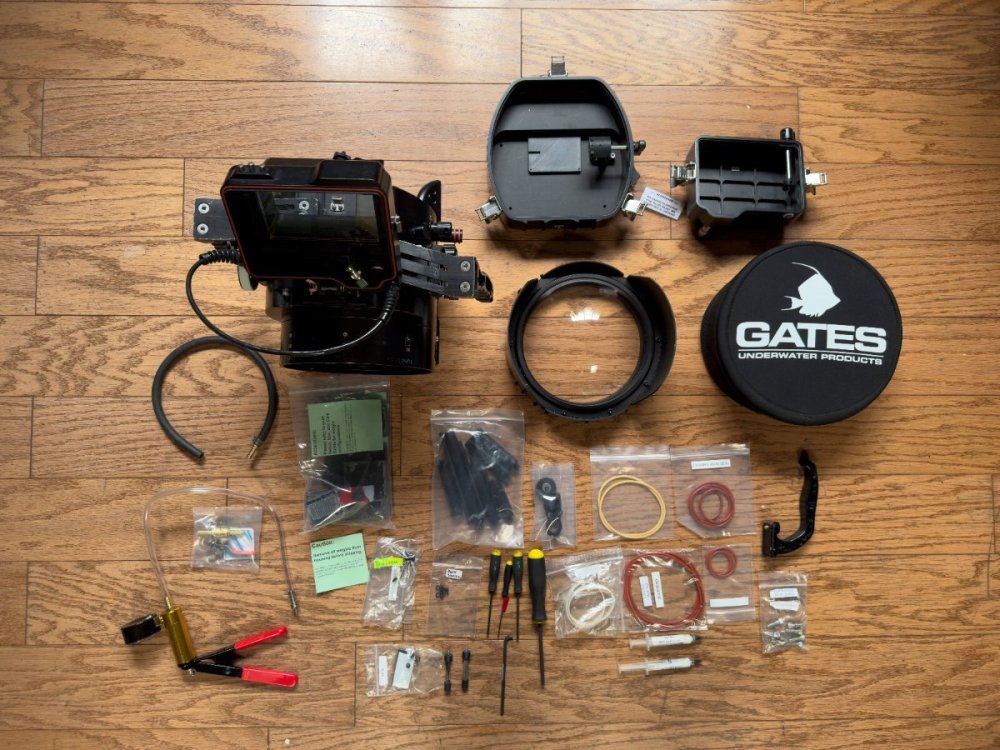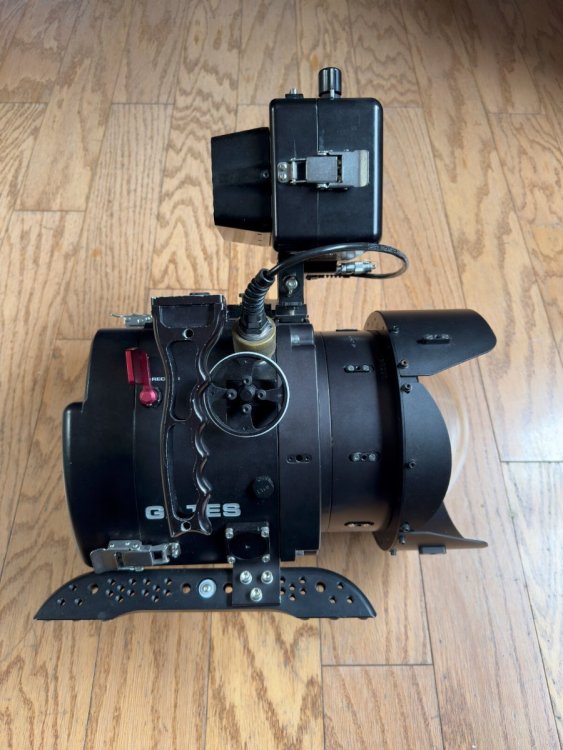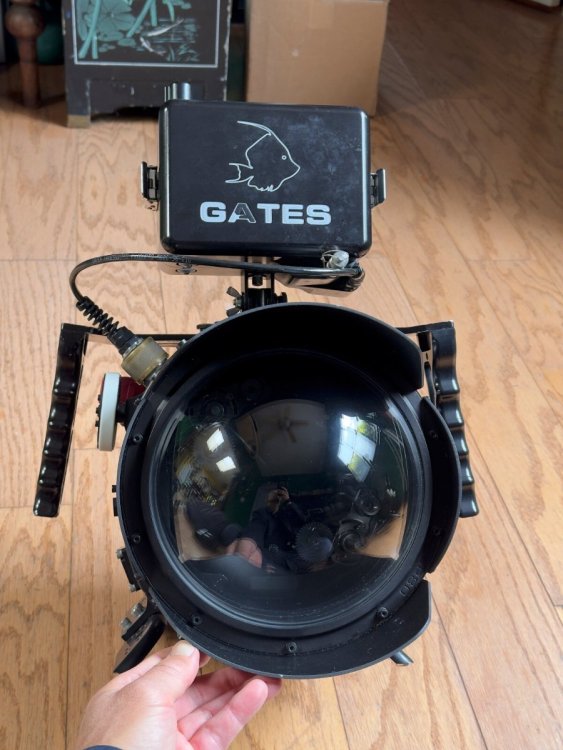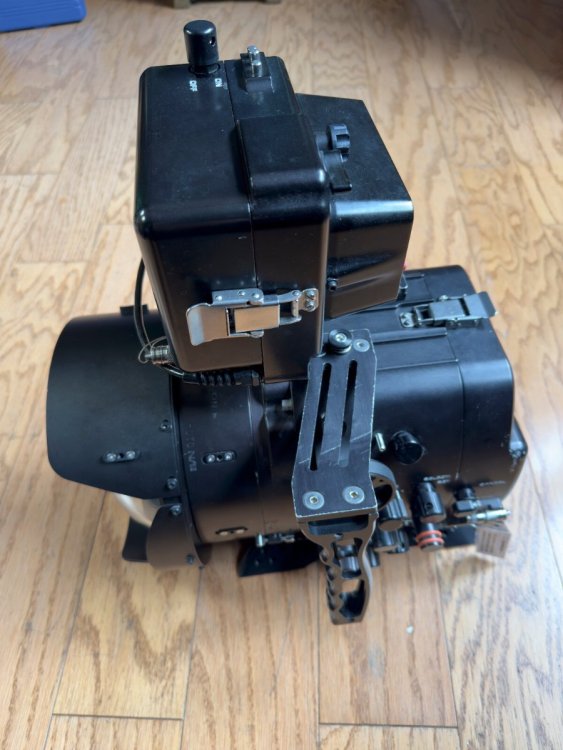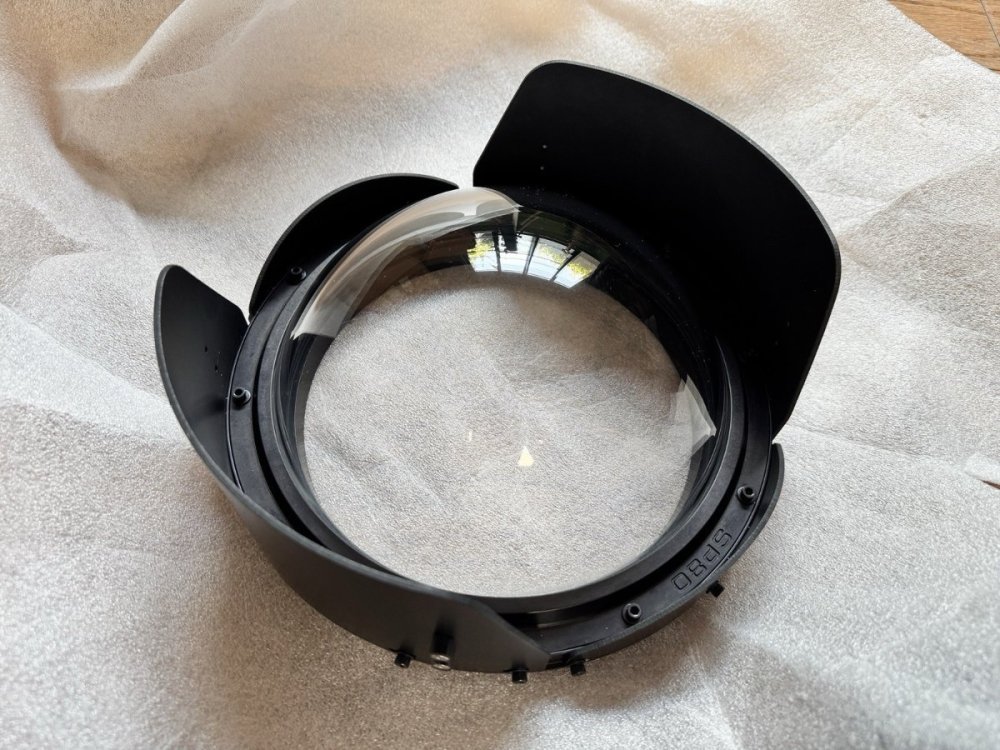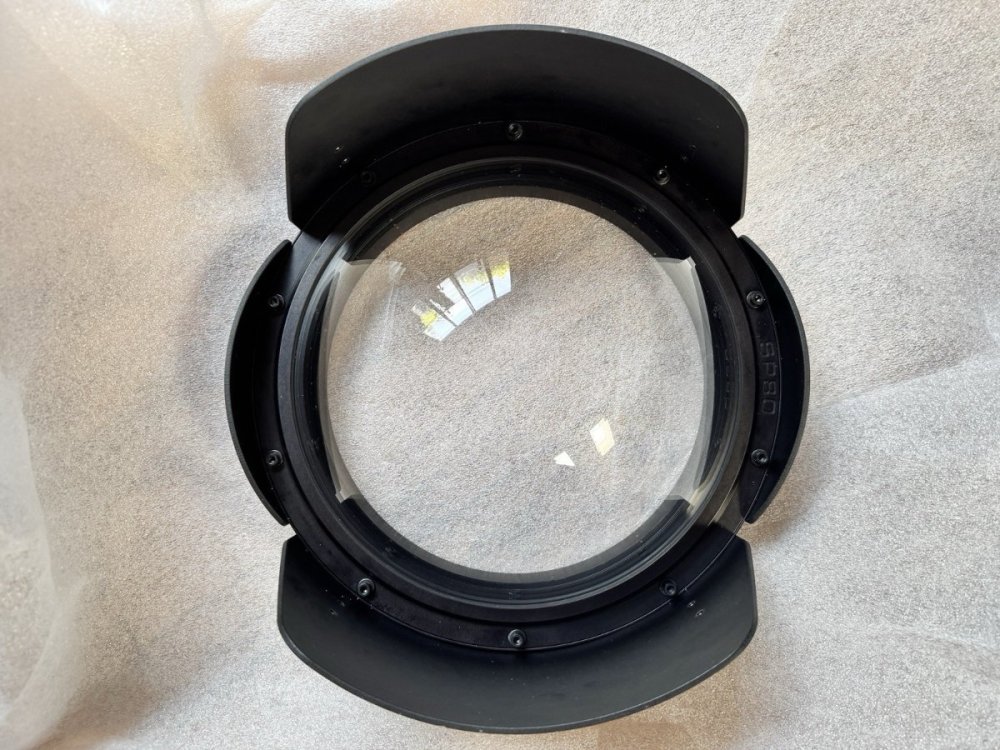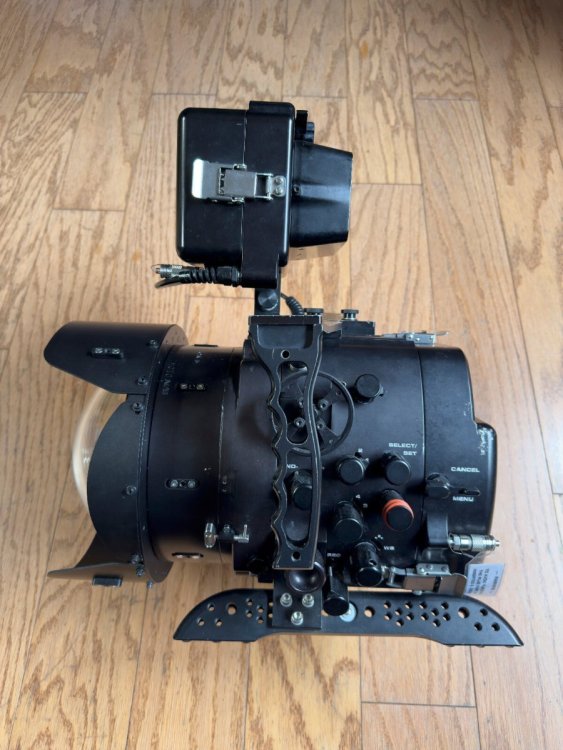All Activity
- Today
-
What adaptor do you use to offset the second rail system? i have a smallrig rail system but i need to offset it to support my massive anamorphot 65 adaptor. only 1.33x anamorphic but thats enough for me
-
Resurrecting an ancient thread, this is indeed the first Arri camera produced. This very camera now resides in my collection after 40 years of searching for an example. The original owner, Micheal Rogge was a long time collector of early cinema cameras. Unfortunately he passed away last year, and I was fortunate to acquire this example. It’s an earlier prototype without a serial number. The model is extreme rare with only a handful of known examples, the last known serial number being #11 @David Mullen ASC yes, it was inspired by the Akeley Pancake… but definitely not a direct rip off of the earlier Pancake. Short of the shape, the camera was not nearly as innovative as the Akeley: https://www.kinocameras.com/apparatus/Akeley-pancake More details on the Arri Kinarri in my blog: https://www.kinocameras.com/apparatus/kinarri
-

Style Ideas for Period Piece/Comedy
David Mullen ASC replied to Brandon Canning's topic in General Discussion
There are plenty of comedies set around the late 18th / early 19th century, from "Love and Death" to "The Madness of King George", or something shot by Geoffrey Unsworth titled "Royal Flash"... Personally I don't think of "comedy" as a visual style when I design the look for a comedy, the only rule about lighting and framing comedy is whether the humor is on display, can you see the sight gag, can you hear the joke, does the joke "land" visually, etc. -- or whether your approach is distracting from the humor. The other thing to keep in mind is that comedy often plays better in looser, wider frames in order to set-up the situation and interactions with props and people -- close-ups are more for drama and emotion. There are exceptions of course, the joke may land when you cut to a reaction shot for example. The most expensive shot in the Silent Era was the train falling into a gorge when a burning bridge underneath collapses in Buster Keaton's "The General" (1926), but in some ways that spectacular shot exists to get a laugh when Keaton next cuts to the deadpan reaction of the General who ordered the train to cross, saying the bridge would hold (played by the DP, Dev Jennings!) Other than that, it's better to treat a comedy just as you would a drama or romance, etc. Treat it straight, let the humor come out of the action and performances. -

Best modern lenses for Super 16mm
Dom Jaeger replied to Mohammed Tahir's topic in Lenses & Lens Accessories
We had an Optex 5.5mm at the last rental house I worked at, which was a pretty good super wide angle I recall. -
Thanks Dom! We’re excited about our next chapter!
- Yesterday
-
Best modern lenses for Super 16mm
Robin Phillips replied to Mohammed Tahir's topic in Lenses & Lens Accessories
Ultra 16s are a super 16 lens set exclusively. Ultra Primes are super 35 formatted lenses, but they're sharp enough to use the 16mm and up for super 16 work. Arri's ads for the U16s initially said to use the UPs for your longer focal lengths Ultra Primes and U16s have the same size housing, and the UPs will clear an SR3 viewfinder with no problem. have done it before. -
Roko Belic started following Gates Underwater Housing for Canon C300MK2 (MKii) FOR SALE
-
Professional GATES Underwater Housing for the Canon C300MKii camera. Retail price for this unit is usually over $14,000 Selling for $2,200 or best offer. Check out the specs from this link for Gates Underwater Housing for Canon C300MKii The above link is for relevant for main housing and port info only. Our kit does NOT include warranty nor some of the items like travel case and carry lanyard on the Gates Included Accessories tab. Note: the Gates link describes a monitor housing* that's different than the one we're selling with this kit - see below. READY TO USE! Camera NOT included. This will NOT work with a Canon C300MK1 or MK3, nor C500 nor any other camera. This is a complete Gates Underwater Housing including an acrylic dome port, Gates neoprene port cover, O-rings, monitor housing*, integrated cables, weights etc. *Comes with Gates TVL55 Underwater housing for a TV Logic VFM-058W Monitor which connects to the camera via integrated SDI cable (Cable included, monitor NOT included) Kit includes extra o-rings, lubricant, tools - everything you need except the camera. Amazing build quality. Weighs about 30 pounds not including camera. Gates has just buffed the dome port, so the port is practically as new. Has scuffs on the metal housing from normal use. Combining this housing with a Canon C300MKII camera is one of the least expensive ways to capture high quality underwater and water surface video. I purchased this directly from Gates, tested it twice, and discovered we need to use a different camera for our project for frame rate reasons. I love this housing but don't have a use for it now. Please message me if you have any questions. This listing does NOT include Gates Seal Check or Seal Check II. There's a matching ebay listing if you're interested.
-
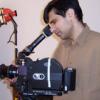
Best modern lenses for Super 16mm
Mohammed Tahir replied to Mohammed Tahir's topic in Lenses & Lens Accessories
Just to make sure I got this right: ZEISS/ARRI Ultra 16s Primes were made for S16 and ZEISS/ARRI Ultra Primes were made for S35? Luis - the lens that you tried is a 16mm ZEISS/ARRI Ultra Prime S35 lens which just about fits under the VF? I'm only going by pictures that I've seen but they seem to have the same barrel diameter, so I'm wondering if they all fit. -
testing 16mm stocks with 35mm stills
Robin Phillips replied to adrian angehrn's topic in Film Stocks & Processing
the way to do this is with 100ft rolls of 16 and ideally the camera and lenses you want to work with. load the 100ft rolls entirely in the bag to ensure no light bleed. then use the either the same scanner you intend on using or the closest one you can afford to get your scans done. anything outside if this workflow will leave you with a lot of question marks and uncontrolled variables that may lead to a surprise once you start shooting and getting scans back -
Juan Dorado started following Gregory Irwin
-
μεταμορφώσεις
Jeff Bernstein replied to Jeff Bernstein's topic in Students, New Filmmakers, Film Schools and Programs
CLASSIC SCREEN KISS MODERNISED : Time After Time (1979) Coincidentally, the same year, with Sven Nykvist now in Hollywood . . . "If we're gonna kiss each other, I think it'd be a good idea, if one of us closed our eyes." Starting Over (1979) -

testing 16mm stocks with 35mm stills
Tyler Purcell replied to adrian angehrn's topic in Film Stocks & Processing
Sadly there really isn't any way to do what you're trying to do using the methods listed above. 1) Cinestill is old film, it will have a layer of fog that will not be present on the new Kodak Vision 3 16mm film you'll use for your shoot. Thus, making it entirely inaccurate in terms of grain. 2) Kodak has removed the Remjet anti halation coating and most likely anything you shoot with Kodak film in the future, will be this new stock. Cinestill does not have this new material. It will react entirely different being pushed/pulled as the new AHU layer is actually made of black silver, which needs to be removed during the processing process. Remjet is actually removed prior to processing. Because the black silver is processed out, whatever remains will have a very different look than simply removing a layer physically. 3) 35mm stills are vistavision size 8 perforations. Stills lenses are designed to cover that frame size, they are not designed to give you any indication of sharpness in a center crop. I have seen this with my digital cinema cameras as well. When using actual super 16 glass, you will have an entirely different look, it will be way sharper. Also, the contrast of the lenses is very important as well, you can't just use still lenses and then expect the Superspeeds to look the same, because they won't. Yes, Zeiss does make stills lenses, but they don't have the same look as the Superspeeds. Sadly you need to perform controlled tests on 16mm to really get the look and feel of what you're after. I would also confirm with Kodak which film you'll be getting, the older remjet film or the new AHU coating film. You will need to test with whatever film you're shooting with. The AHU film has not replaced the Remjet film yet, but it's coming fast. -
Best modern lenses for Super 16mm
Robin Phillips replied to Mohammed Tahir's topic in Lenses & Lens Accessories
having owned an optex 8mm and an optar illumina 7mm, the optar was MUCH sharper. those optar and elite lenses are pretty remarkable if you dont want zeiss glass. -
bump. price reduced to 3250 OBO
-
Oh wow! Congratulations on a stellar career, Greg! I wish you all the best for the next phase of your life.
-
After an incredible 45-year career as an “A” camera 1st AC on some of Hollywood’s biggest feature films, Gregory Irwin is officially retiring — and clearing out select pieces of high-end motion picture camera equipment! All items are in very good to excellent condition and have been meticulously maintained. 📩 Message me directly for details and pricing. Serious inquiries only. Partial inventory of sale gear: Preston Cinema Systems Small HD Cartoni Focusbug Technologies TVLogic Cinematography Electronics and more! Gear worked on: Thunderbolts * INTERSTELLAR JOKER FAST & FURIOUS Check out my IMDb for all credits! https://www.imdb.com/name/nm0410389/?ref_=ext_shr_lnk Thank you! Greg
-
After an incredible 45-year career as an “A” camera 1st AC on some of Hollywood’s biggest feature films, Gregory Irwin is officially retiring — and clearing out select pieces of high-end motion picture camera equipment! All items are in very good to excellent condition and have been meticulously maintained. 📩 Message me directly for details and pricing. Serious inquiries only. Partial inventory of sale gear: Preston Cinema Systems Small HD Cartoni Focusbug Technologies TVLogic Cinematography Electronics and more! Gear worked on: Thunderbolts * INTERSTELLAR JOKER FAST & FURIOUS Check out my IMDb for all credits! https://www.imdb.com/name/nm0410389/?ref_=ext_shr_lnk Thank you! Greg
-

testing 16mm stocks with 35mm stills
Mark Dunn replied to adrian angehrn's topic in Film Stocks & Processing
One problem I can see is that grain is much more noticeable in stills- frame enlargements from films appear much grainier than the actual film. When projected there is an averaging effect which reduces the appearance of grain. So if grain is important to the look of the film it may be easier to simulate it in post. I know nothing about that. -
For sale- Arri Zeiss Ultra 16 Lens Set
Rafa de Pazos replied to Ian Forbes's topic in Cine Marketplace
PMd -
Hello everyone, I am preparing a film on 16mm and wanted to test different stocks (in similar conditions to the shoot) with various push/pull processing to have a concrete base to discuss the look with the director. For budget reasons i thought of shooting vision 3 on 35mm stills. Grain structure and sharpness seem to be the biggest drawback here. So, my questions would be the following : Would I get 16mm grain structure by cropping into the 35 in post ? About the sharpness problem, as i guess most of it is lens related (we will use Zeiss S16 Highspeeds), do you have any suggestion how i could come as close as possible to to the final rendering ? Thank you !
-
Emulating 5263 with 5219
adrian angehrn replied to adrian angehrn's topic in Film Stocks & Processing
Thanks for your answer David, i will try to test that and will share the results here. I also have to thank you for sharing your knowledge in general, I've been learning so much from you since i started my journey in cinematography ! -

Best modern lenses for Super 16mm
Dom Jaeger replied to Mohammed Tahir's topic in Lenses & Lens Accessories
Ultra 16s, Cooke SK4s and the odd wide angle by Optex and Century were about as good as it got with S16 primes. But the enduring appeal of Zeiss Super Speeds (S16 ones) is not to be dismissed. Optar Illuminates and Elites were also not bad, approaching Super Speed quality. Many S16 lens sets were intended to be filled out with 35mm lenses for longer focal lengths. Lots of good zooms were made for S16 too. The Canons (8-64, 7-63, 6-66 etc), or Cookes (10.4-52 or 10-30) or Zeiss 11-110 or Angenieux 7-81, 11.5-138 were all good in various ways. -
Posted 1 minute ago (edited) I saw a promising ACL 2 kit on eBay. The seller bought it at action here in NZ. I'm trying to help him get it basically tested. USD6K buy now. eBay link.. https://www.ebay.com/itm/257001653238?_skw=eclair+acl&itmmeta=01JZBRQT3GBGZZMMJ75G0EA9FY&hash=item3bd67e03f6:g:cFIAAeSwn6doZzBH&itmprp=enc%3AAQAKAAAA0FkggFvd1GGDu0w3yXCmi1cd8G86BOp38L9y2kOLnA9JEzaLY%2FNyPJ56daSF0wr8kfbm5YqylzGiqQQ7MfSCaxXDNckbFe3iWhCkQckqW3e9%2FsIphp9BKEvjTSlAevHKPOQDQJuCEcGHNXCvsbR49A08CtA448z2NS8FdiB91vJnrY5Fr8VXG8A5vJ02HEp9KFnsGkegnSEdCrWS7F5ZAboqZdnaH0UwhVPQbje6ffJwaNKS4I2EAxBVICqpMsl%2FDknJUqPFmoel0wM9LkSVOoU%3D|tkp%3ABk9SR-yh3_j6ZQ You can contact the seller directly... Will Wallace<fiveonefive@gmail.com> Comment from Gregg: If I help examine and test the camera (video call) I may get to see if it is standard 16/ S16. If not S16 then the 15-150 Ang is a bit wasted. Including lenses in a sale can often confuse the value issue. The 15-150 has a couple of listings under USD700, which seems undervalued to me. If the camera kit is pulled off eBay then he may sell the lenses separately.
-
I saw a promising ACL 2 kit on eBay. The seller bought at auction in NZ. I'm trying to help him get it basically tested. USD6K buy now. eBay link.. https://www.ebay.com/itm/257001653238?_skw=eclair+acl&itmmeta=01JZBRQT3GBGZZMMJ75G0EA9FY&hash=item3bd67e03f6:g:cFIAAeSwn6doZzBH&itmprp=enc%3AAQAKAAAA0FkggFvd1GGDu0w3yXCmi1cd8G86BOp38L9y2kOLnA9JEzaLY%2FNyPJ56daSF0wr8kfbm5YqylzGiqQQ7MfSCaxXDNckbFe3iWhCkQckqW3e9%2FsIphp9BKEvjTSlAevHKPOQDQJuCEcGHNXCvsbR49A08CtA448z2NS8FdiB91vJnrY5Fr8VXG8A5vJ02HEp9KFnsGkegnSEdCrWS7F5ZAboqZdnaH0UwhVPQbje6ffJwaNKS4I2EAxBVICqpMsl%2FDknJUqPFmoel0wM9LkSVOoU%3D|tkp%3ABk9SR-yh3_j6ZQ You can contact the seller directly... Will Wallace<fiveonefive@gmail.com>




